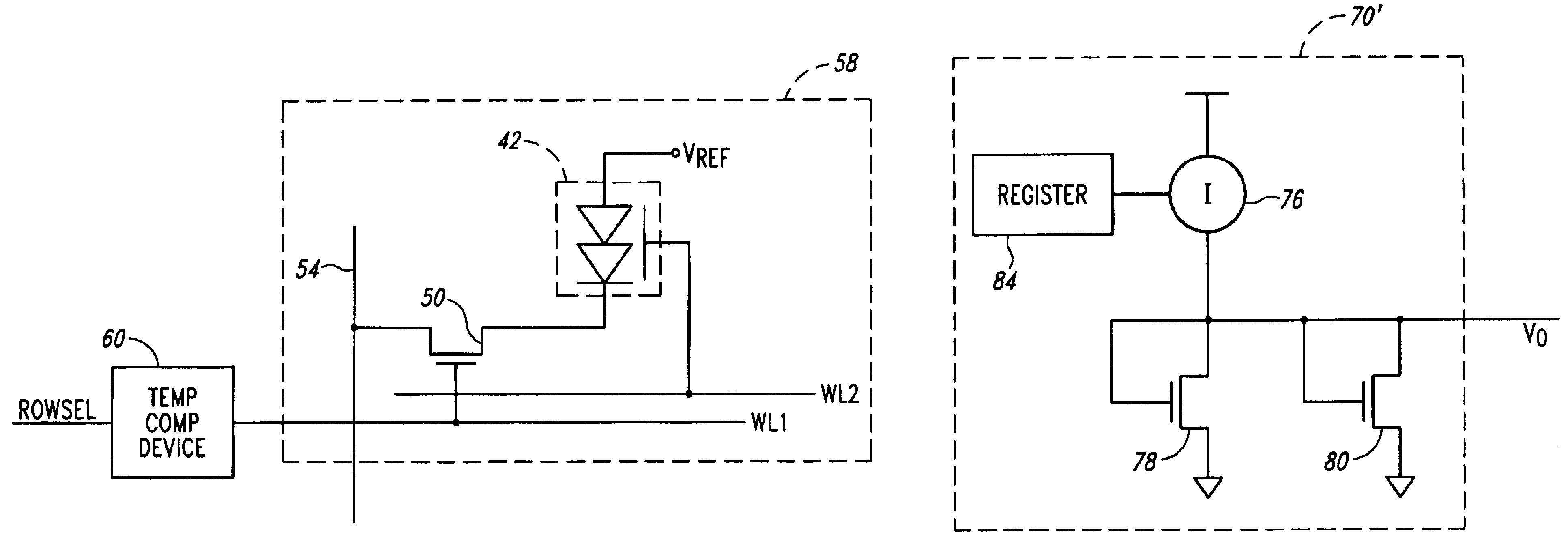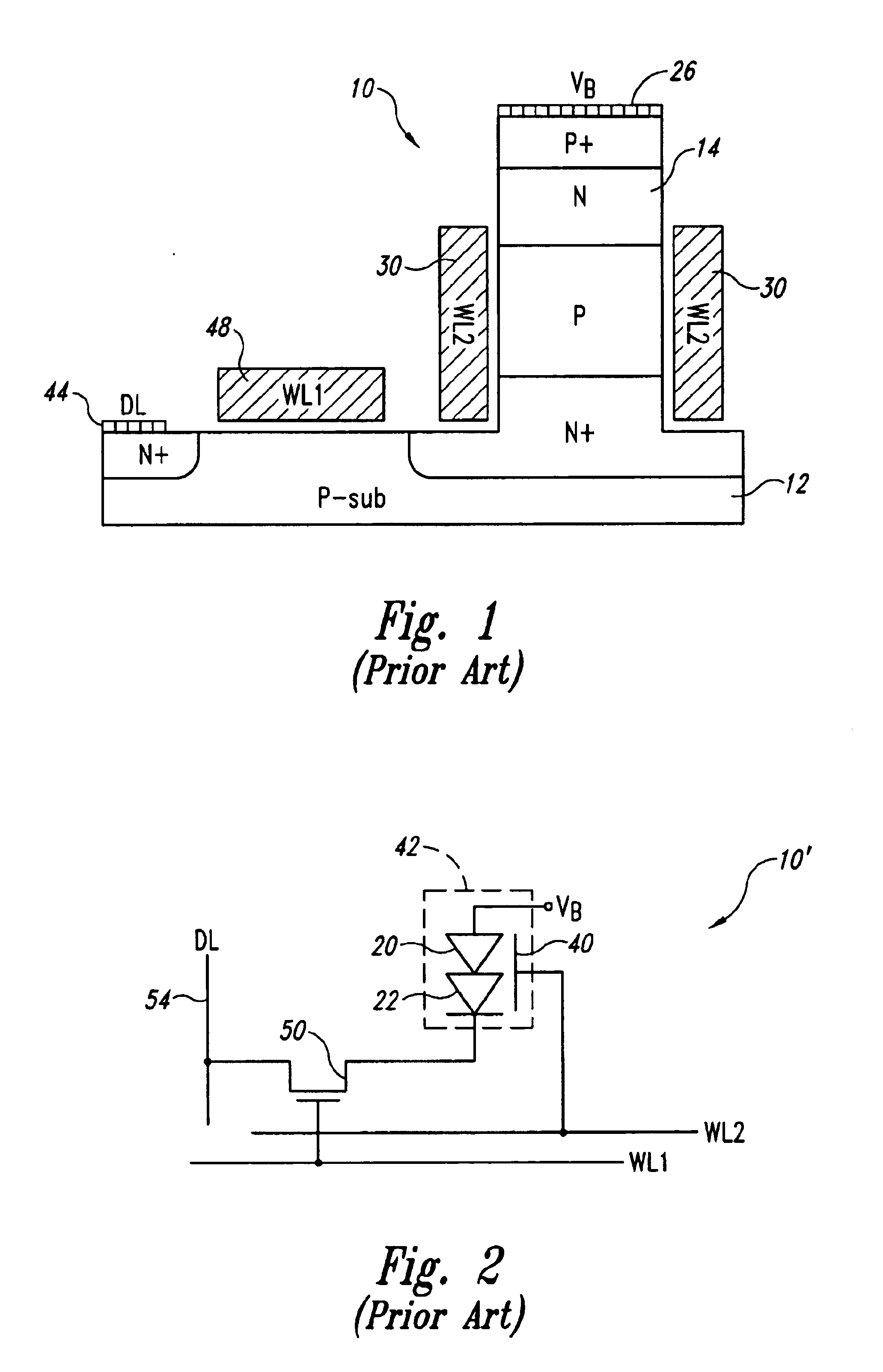Temperature compensated T-RAM memory device and method
a memory device and temperature compensation technology, applied in pulse generators, pulse techniques, instruments, etc., can solve the problems of excessive power consumption, and large sram memory cells
- Summary
- Abstract
- Description
- Claims
- Application Information
AI Technical Summary
Problems solved by technology
Method used
Image
Examples
Embodiment Construction
[0026]The principle of operation of the disclosed embodiments of the invention can best be explained with further reference to FIGS. 2-4. It will be recalled from the previous explanation of FIG. 3 that data loss in a T-RAM memory cell can be prevented by maintaining the sub-threshold current of the access transistor 50 (FIG. 2) at a constant level slightly above the holding current IH despite variations in temperature. With reference to FIG. 4, the sub-threshold current can be maintained at a constant level, for example I1, by reducing the gate-to-source voltage from V1 to V2 as the temperature rises from T1 to T2. More specifically, the gate-to-source voltage is set to V1 at the relatively low temperature T1 to provides a sub-threshold current of I1. The gate-to-source voltage is then reduced to V2 to maintain the same sub-threshold current I1 when the temperature increases to T2. Thus, the gate-to-source voltage varies over a range ΔV to maintain a constant sub threshold current ...
PUM
 Login to View More
Login to View More Abstract
Description
Claims
Application Information
 Login to View More
Login to View More - R&D
- Intellectual Property
- Life Sciences
- Materials
- Tech Scout
- Unparalleled Data Quality
- Higher Quality Content
- 60% Fewer Hallucinations
Browse by: Latest US Patents, China's latest patents, Technical Efficacy Thesaurus, Application Domain, Technology Topic, Popular Technical Reports.
© 2025 PatSnap. All rights reserved.Legal|Privacy policy|Modern Slavery Act Transparency Statement|Sitemap|About US| Contact US: help@patsnap.com



